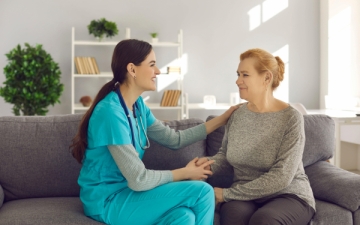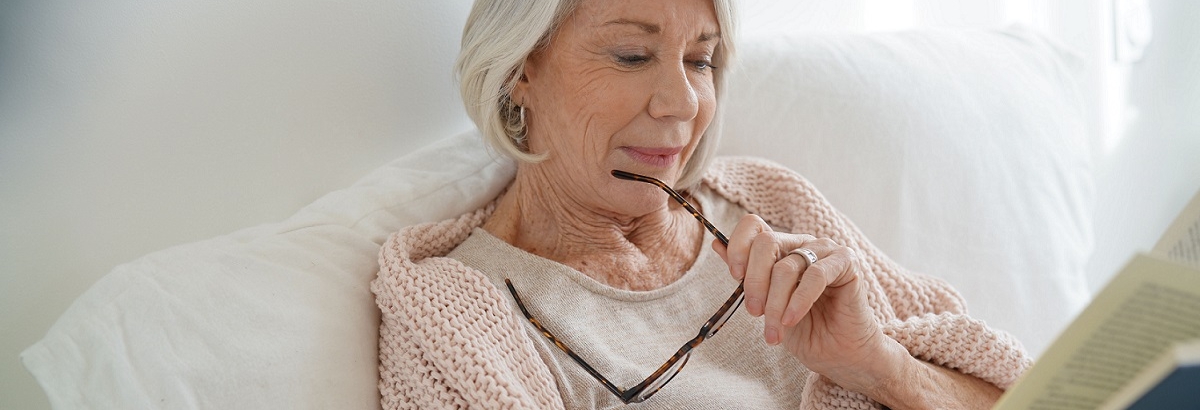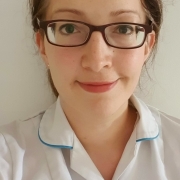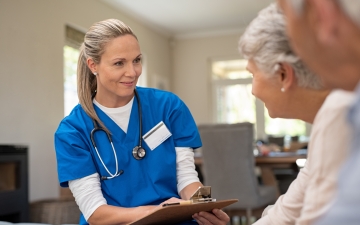
We spend almost a third of our lives asleep, and what happens during this period of rest can have a substantial impact on our daytime function and long-term health outcomes.[1]
Respiratory sleep disorders such as obstructive sleep apnoea/hypopnea syndrome (OSAHS), central sleep apnoea, and obesity hypoventilation syndrome disrupt breathing and reduce the quality of sleep, with OSAHS the most prevalent, affecting 2-4% of the middle-aged population.[2],[3] In this condition, the upper airway intermittently narrows or closes during sleep, leading to desaturations or arousals resulting in fragmented sleep and daytime symptoms such as excessive sleepiness.[4]
The prevalence of OSAHS is known to rise with age and with increasing BMI, and is therefore an area of concern with rising levels of obesity and an ageing population.[5] When left untreated, it is implicated in an elevated cerebrovascular and cardiovascular risk, as well as reduced quality of life, and yet is known to be significantly underdiagnosed.[5]
Treatment aims to splint the airway open using continuous positive airway pressure (CPAP) and is proven to improve outcomes,[6] but first we must find and diagnose those that would benefit from such treatment. So how do we diagnose it, and are there ways to improve our detection of it?
Clinical assessment
A good clinical sleep history should provide a good indication of what the suspected issue may be, leading to the appropriate choice of diagnostic test. Classic symptoms such as excessive daytime sleepiness, snoring, witnessed apnoeas, and waking choking should prompt suspicion of OSAHS, and other features such as BMI, medications, and comorbidities taken into account.[4]
Complex diagnostic testing
Full polysomnography is deemed the gold standard for diagnosing sleep disorders and consists of a complex in-laboratory overnight test including assessment of brain waves to determine sleep stage,[7] as well as many other signals. However, such testing is costly, difficult to access, and labour intensive.[8] Where respiratory sleep disorders are suspected, home testing can be employed which is adequate to reach a confident diagnosis and improves access to testing.[9]
Home sleep testing:
Overnight Oximetry
Overnight oximetry uses a small device with a finger probe to monitor arterial oxygen saturation (SpO2) and heart rate through the night. Desaturations, where oxygen levels drop by more than 4% from baseline, are calculated to give an index per hour.[10]
However, whilst overnight oximetry is useful as a screening tool, and with patients who have a strongly suggestive history, specificity is poor and it cannot rule out OSAH.[9] Overnight oximetry cannot determine the type of sleep apnoea, and can overestimate the number of events especially in co-existing respiratory disease, and conversely underestimate in younger patients.[9] Patient selection is therefore important, and recognising the limitations of oximetry, NICE’s most recent guidelines recommend polygraphy where available.[4]
Polygraphy
Polygraphy, or limited multi-channel sleep studies, are becoming more commonplace as a first-line investigation due to the additional information they provide.[9] These portable devices include attachments such as SpO2 monitor, respiratory effort bands to look at breathing effort, and a nasal cannula to monitor respiratory airflow. Snore and sleeping position can be assessed.
The principal measure to evaluate sleep apnoea, the apnoea hypopnea index (AHI), is determined by looking at the average number of airflow reductions (hypopneas) or cessations (apnoeas) per hour, and any corresponding desaturations. An AHI below 5 is within normal limits, 5-15 mild, 15-30 moderate, and 30+ classed as severe.[11] The type of apnoea can be qualified into either obstructive, central or mixed, based on whether respiratory effort is present for all, none, or some of the apnoea. Polygraphy is therefore more sensitive to detecting OSAHS than oximetry alone, but also differentiates between the different types of sleep disordered breathing.[9] The nature of the problem needs to be determined as the treatment differs and using polygraphy as a first line investigation may help lead to quicker diagnosis and appropriate treatment.
Future directions
Monitoring respiration during sleep has undergone many advances in the last 40 years yet limitations remain.[12] Polygraphy is the currently recommended approach,[4] offering the best balance between accessibility and diagnostic accuracy. However, limitations in scoring events can lead to OSAHS being underestimated when arousals cannot be assessed, failure of signals is not uncommon, and the devices require patients to have the dexterity and ability to position sensors correctly at home.
However, newer technologies are becoming available with the goal to improve home-based devices. With the advent of telehealth, signals can be remotely monitored, to enable the sleep centre to contact the patient and correct problems, reducing failure rates.[13] Patches worn on the skin are being developed which can monitor oxygen, respiration, and heart rate, making devices even simpler to attach.[14] Alternative signals such as peripheral arterial tonometry can detect sympathetic arousals from respiratory events.[9]
The goal is to move testing closer to home, whilst improving the data collected, enabling faster and better diagnostics in a way that is acceptable and manageable for the patient. In this way, more people can receive the right treatment sooner, to improve long term health outcomes and quality of life.
Any advice given and opinions expressed in this article are those of the author and do not reflect the view of Chiesi Limited (Chiesi). All content in this article is for informational and educational purposes only. Although Chiesi strives to always provide accurate information, it is not responsible for and does not verify for accuracy any of the information contained within.
[1] Medic, G, Wille M, Hemels ME. Short- and long-term health consequences of sleep disruption. Nat Sci Sleep. 2017;9:151-161
[2] Sepehri Shamloo, A, Arya, A, Dagres, N et al. Sleep Disorders and Atrial Fibrillation: Current Situation and Future Directions. Galen Medical Journal. 2018;24;7:e1416
[3] Jennum P, Riha RL. Epidemiology of sleep apnoea/hypopnoea syndrome and sleep-disordered breathing. European Respiratory Journal. 2009;33:907-14
[4] NICE. Obstructive sleep apnoea/hypopnoea syndrome and obesity hypoventilation syndrome in over 16s. Available at: www.nice.org.uk/guidance/ng202
[5] Asthma + Lung UK. Obstructive Sleep Apnoea (OSA) toolkit. Available at: https://www.blf.org.uk/sites/default/files/OSA_Toolkit_2015_BLF_0.pdf
[6] Donovan LM, Boeder S, Malhotra A et al. New developments in the use of positive airway pressure for obstructive sleep apnea. J Thorac Dis. 2015;7(8):1323-1342
[7] Corlateanu A, Covantev S, Botnaru V, et al. To sleep, or not to sleep – that is the question, for polysomnography. Breathe. 2017;13:137–140
[8] Natsky AN, Vakulin A, Coetzer CLC, et al. Economic evaluation of diagnostic sleep studies for obstructive sleep apnoea: a systematic review protocol. Syst Rev. 2021;10(1):104
[9] Association for Respiratory Physiology and Technology. Standards of care for sleep apnoea services (Diagnostics). Available at:https://www.artp.org.uk/CoreCode/Modules/Content/ResourceLibrary/AjaxHandlers/ResourceAccessHandler.aspx/3a8ea5c4-308a-4b5d-95d9-1e40367f4ea4
[10] NICE. Interventional procedure overview of hypoglossal nerve stimulation for moderate to severe obstructive sleep apnoea. Available at: https://www.nice.org.uk/guidance/ipg598/documents/overview
[11] NICE. Continuous positive airway pressure for the treatment of obstructive sleep apnoea/hypopnoea syndrome. Available at: https://www.nice.org.uk/guidance/ta139/chapter/2-clinical-need-and-practice
[12] Riha R. Diagnostic approaches to respiratory sleep disorders. Journal of Thoracic Disease. 2015;7:1373–1384.
[13] Bruyneel M. Technical Developments and Clinical Use of Telemedicine in Sleep Medicine. J Clin Med. 2016;5(12):116
[14] Zavanelli et al. At-home wireless monitoring of acute hemodynamic disturbances to detect sleep apnea and sleep stages via a soft sternal patch. Science Advances. 2021;7(52):eabl4146



 Sophie Booth
Sophie Booth 

